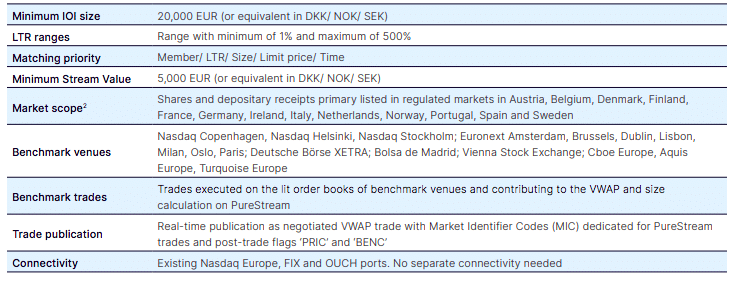The Ontario Securities Commission (OSC) has launched a new trading simulation tool for investors to test how online gamification tactics can influence their investing behaviour.
The Get Smarter About Trading simulator provides retail investors with a chance to participate in a simulated stock market and practice online trading.
It exposes users to gamification techniques to show them what could be influencing their investing behaviour, according to Leslie Byberg, Executive Vice President, Strategic Regulation at the OSC.

As digital trading platforms have grown in popularity, regulators around the globe are alert to the usage of digital engagement practices (DEPs) within these platforms, according to the OSC.
“Digital investing platforms are increasingly popular and make it easier for retail investors to participate in financial markets, but there is growing regulatory concern over the use of gamification techniques on these platforms,” Byberg said.
In addition, the OSC has released a new report that studied the impact of gamification on investors.
The report, Gamification Revisited: New Experimental Findings in Retail Investing, looks at whether promoting certain assets on digital investing platforms presents a risk to investors.
“The research along with the GetSmarterAboutTrading tool will help people better understand the impact of gamification techniques on their trading behaviour and help investors make more informed decisions,” Byberg said.
The OSC conducted an experiment where participants received virtual “money” to invest in fictional stocks on a made-up trading platform.
Participants took part in simulated trading where stocks were promoted in different ways.
The research found two types of promotion had a significant impact on participants’ trading behaviours; those who saw promoted stocks featured on a social feed traded 12% more in those stocks, and those who had the option to copy the trades of a “high performing” user traded 18% more in the promoted stocks.
The findings suggest that these social engagement techniques can influence investor behaviours by encouraging trading in specific assets.
This influence is likely to have a negative impact, potentially through under-diversification or excessive risk taking.
The new report builds on the work of an earlier OSC research report Digital Engagement Practices in Retail Investing: Gamification and Other Behavioural Techniques.
The 2022 report included the results of an online experiment showing the impact of “points” and “top-traded lists” on user trading.
The experiment found participants rewarded with points for buying and selling stocks made 39% more trades and those who saw a list of top traded stocks were 14% more likely to buy and sell those stocks. More frequent trading generally has a negative impact on investor returns.
This report also contains several recommendations for how regulators and authorities in Canada and abroad might respond to the ongoing use of digital engagement practices by online investing platforms.
The OSC said that authorities in Canada and abroad should continue to consider whether updates to regulations and guidance for the usage of DEPs by investing platforms are required, with particular attention paid to techniques that, through high-quality research, have been demonstrated to harm investors.
“Regulators could also consider whether to limit digital trading platforms from using tactical applications of DEPs that our research indicates can compromise investor protection,” Byberg said.
“We encourage authorities to gather data from firms and registrants to continue to measure the impact of DEPs on investor behaviours and outcomes,” she added.
The OSC also encourages registrants and firms that operate digital trading platforms to conduct their own research to identify the effects of DEPs on the behaviour and outcomes of users.



















The Hidden Challenges with Secondaries Market Growth
Michael Aldridge, President of Accelex, looks at the exponential growth of private market secondaries and the role technology can play to enhance data quality and support investment decisions.
Private secondaries are growing at pace as investors look for liquidity solutions in an increasingly volatile market.
In the first half of 2024 market value reached USD 68 billion, reflecting a significant shift in investor strategy towards more flexible, liquid options in private markets.
The sector is looking at a potentially record-breaking finish to 2024, according to mid-year advisory reports from Campbell Lutyens, Jefferies, Evercore and PJT Partners.
Despite this growth, the sheer volume and complexity of unstructured data, often trapped within PDFs and other document formats, poses a significant challenge for secondary market investors.
What’s behind the growth?
Over the past couple of years, public markets have been underperforming and IPO activity has been volatile. This has put pressure on investors as they look to other avenues for liquidity, and to rebalance their portfolios.
The availability of better data and transparency in private markets have made secondary investments more attractive and accessible. They also offer tailored and flexible solutions for GPs and LPs such as structured liquidity and continuation funds.
Secondaries provide investors with a place to buy assets years into their performance cycle, usually at a discount, which means the average holding time of the fund’s underlying assets will typically be shorter.
Compared with traditional private investments executed at fund inception, buyers have significantly more asset-level information available to them for the basis of their decisions.
However, carrying out independent valuation of all assets quickly and efficiently is key to capitalising on this data-rich deal environment.
Data is the lifeblood of decision-making
In secondaries, data is the lifeblood of informed decision-making and as more investors enter the space, the sheer volume of data associated with these transactions has skyrocketed.
What buyers are up against is how to access valuable content within a vast amount of unstructured data that is provided by the seller.
The three main challenges facing buyers include:
These challenges are creating a bottleneck in the due diligence process, which is paramount in secondary deals. With the volume of assets being exchanged, investors require deeper insights into risk factors, financial performance and potential future returns – which must be delivered quickly.
These manual processes are slowing them down while being costly, inefficient, time-consuming and often error-prone.
With the secondaries market forecasted to exceed $140 billion by the end of the year, these manual processes are making it seemingly impossible for buyers to strike the right balance between speed, scalability and accuracy without the occasional mis-valuation or missed opportunity.
The role of technology
To get the most out of this fast-moving market, technology must advance at the same rate.
Currently, there is a lack of automation technology in the market which would bolster secondaries buying.
But the appetite is there for a more sophisticated approach to minimise time spent acquiring, condensing and analysing various data points in a dynamic and responsive manner.
Advancements in technology mean that by adopting AI and machine-learning techniques, processes for these can now be automated.
This allows buyersto simplify the demanding workflow of secondaries and deliver tangible rewards including scalability, auditability, time and cost savings.
AI and automation can tackle and automate most pain points in the secondary due diligence process including:
Looking ahead
The huge growth of the private secondaries market has opened a lot of new doors for investors seeking liquidity in an unpredictable market.
However, this growth is also creating headaches for investors, particularly around managing and analysing the vast volumes of unstructured and disparate data.
To navigate this complex environment efficiently, secondary buyers must increasingly turn to technology.
By embracing AI and automation solutions, they can streamline workflows, reduce manual errors, and enhance scalability.
As the market continues to evolve, leveraging these tools will be essential for staying competitive and unlocking the full potential of secondaries.
Those who can harness the power of data and technology in this fast-paced, dynamic market will reap the rewards.